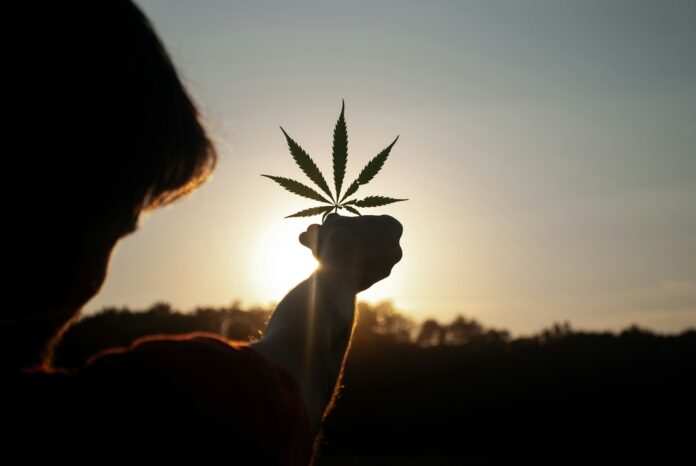
Cannabis concentrates have emerged as a focal point within the realm of cannabis consumption, captivating enthusiasts and novices alike with their potent effects and diverse forms. Among these concentrates, one stands out prominently – cannabis concentrates, often referred to as “liquid gold” due to their rich color, potency, and versatility. This article delves into the world of cannabis extracts, exploring their origins, production methods, and the myriad of ways they are consumed.
The Origins of Liquid Gold:
Cannabis concentrates have a storied history, dating back centuries to ancient civilizations where they were used for medicinal and spiritual purposes. However, it wasn’t until recent decades that modern extraction techniques transformed the landscape of cannabis consumption, giving rise to a wide array of potent concentrates. The early applications of cannabis extracts were rooted in traditional medicine, with cultures across the globe harnessing the plant’s therapeutic properties for ailments ranging from pain relief to sleep disorders.
These ancient civilizations employed rudimentary extraction methods, such as steeping cannabis in oil or alcohol, to create crude forms of extracts. Over time, as scientific understanding advanced, so too did the techniques for extracting cannabinoids and terpenes from the cannabis plant. The advent of solvent-based extraction methods in the 20th century revolutionized the production of cannabis concentrates, paving the way for more efficient and precise extraction processes.
Today, with advancements in technology and a growing body of research supporting the therapeutic potential of cannabis, the market for extracts continues to expand, offering consumers a diverse array of products tailored to their individual needs and preferences.
Extraction Methods:
The process of extracting cannabinoids and terpenes from the cannabis plant to create concentrates is a meticulous one, requiring precision and expertise. Various extraction methods are employed, each yielding distinct textures and compositions.
- Solvent-Based Extraction: This method involves using solvents such as butane, propane, or ethanol to dissolve the cannabinoids and terpenes from the plant material. The resulting solution is then purged to remove residual solvents, leaving behind a concentrated extract known as butane hash oil (BHO) or ethanol extract.
- CO2 Extraction: Considered a cleaner and safer alternative to solvent-based extraction, CO2 extraction utilizes carbon dioxide under high pressure and low temperatures to extract cannabinoids and terpenes from the plant material. The resulting extract is often referred to as CO2 oil or distillate.
- Rosin Pressing: A solventless extraction method, rosin pressing involves applying heat and pressure to cannabis flower or hash to extract the desired compounds. This technique preserves the full spectrum of cannabinoids and terpenes, producing a high-quality extract known as rosin.
The Diversity of Cannabis Extracts:
Cannabis extracts come in many forms, each offering unique consumer characteristics and experiences.
- Shatter: Known for its translucent appearance and brittle texture; shatter is a highly potent cannabis extract that breaks apart like glass when manipulated.
- Wax: Wax extracts, referred to as budder or crumble, have a soft, malleable consistency and are prized for their rich flavor profiles and potent effects.
- Oil: Cannabis oils are versatile extracts that can be consumed orally, topically, or vaporized. They come in various viscosities, from thick and syrupy to thin and runny, and are often infused with terpenes for enhanced flavor and aroma.
Consumption Methods:
Cannabis extracts offer a multitude of consumption methods, catering to diverse preferences and lifestyles.
- Dabbing involves vaporizing a small amount of concentrate on a heated surface, typically a nail or banger, and inhaling the resulting vapor through a dab rig. This method delivers rapid and intense effects, making it popular among seasoned enthusiasts.
- Vaporization: Vaporizers heat cannabis extracts to a temperature below combustion, allowing users to inhale the vapor without the harmful byproducts associated with smoking. Portable vaporizers offer convenience and discretion, while desktop units are prized for their precision and power.
- Edibles: Cannabis extracts can be infused into various edible products, including gummies, chocolates, and baked goods, offering a discreet and long-lasting way to consume cannabis.
Conclusion:
In conclusion, cannabis extracts stand as a testament to the plant’s potency and adaptability, presenting consumers with an extensive array of consumption choices. From the captivating hues and textures of shatter to the seamless vaporization of oils, each extract offers a distinct encounter that resonates with enthusiasts globally. As the cannabis industry progresses and ingenuity flourishes, the allure of these concentrated forms persists, beckoning exploration and unveiling new discoveries.
Whether through the intricate craftsmanship of extraction techniques or the evolving landscape of consumption methods, liquid gold continues to symbolize the pinnacle of cannabis refinement. Its enduring appeal transcends borders, fostering a culture of curiosity and appreciation that transcends generations. As one navigate the ever-expanding horizons of cannabis innovation, the journey into the world of extracts promises to be one of perpetual fascination, enriching the experiences of enthusiasts and connoisseurs alike for generations to come.










